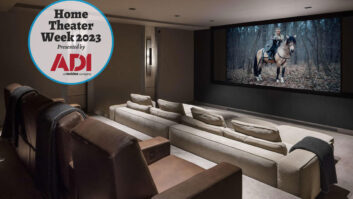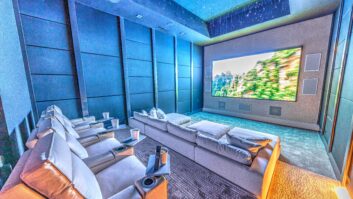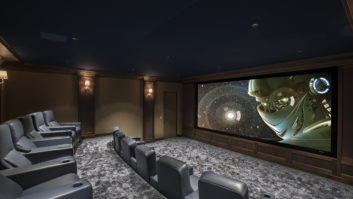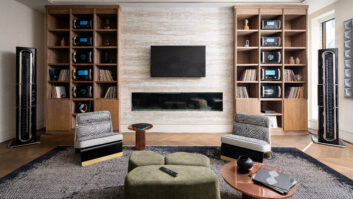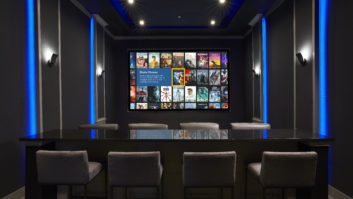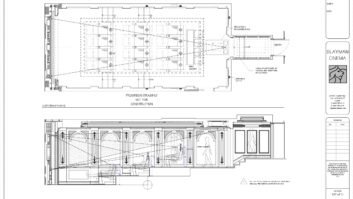As residential private cinema technology rapidly matures, it should be incumbent upon you as a dealer to become more mindful of the seemingly infinite audio and video technology configurations and professional design services that are available to you. Fundamentally you begin with a blank palette for the entertainment space and ultimately craft a final product with the support from your design team that will manage and exceed your client’s expectations.
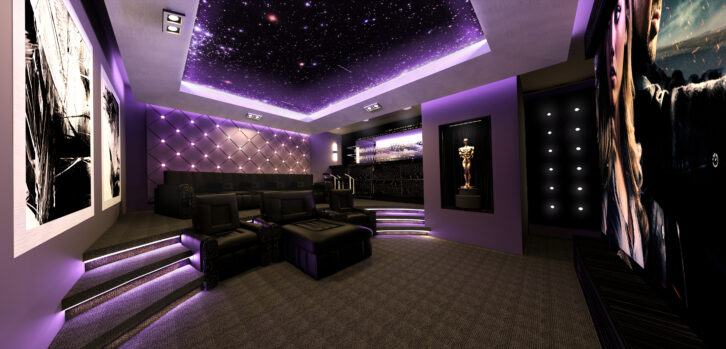
With the innumerable technology options and the many different audio and video configuration options possible, it is wise to align your team with both an interior cinema designer and an acoustics design professional who can assist you in optimizing the performance and aesthetics of the technology in the completed space. You have an opportunity to raise the bar for your high-net-worth clients and those who have a passion for a truly professional cinematic experience in their own homes.
I wanted to touch on some of the more contemporary challenges we deal with from the aesthetic and performance perspective of technology integration.
Immersive Audio
The immersive audio element has powerfully evolved as content has become more creative and diverse and the mode in which it is being reproduced has become more complex. There are many different speaker products available, all with different performance and dimensional characteristics. This presents an interesting challenge, as speaker angles and placement are critical to achieve optimal performance.
The implementation process involves all parties. The acoustical design team must determine what materials, products, and specialized construction will provide proper acoustical room performance results in the allocated space. Keep in mind that this is not a formulaic approach, as each room is unique. The final strategic placement and location of speakers become, for the most part, invisible and hidden behind the room finishes and décor.
Also by Lisa Slayman: Navigating Through Entertainment Seating
The interior cinema room designer will work with you and the acoustical design team, based on the client’s needs, to provide a seamless and elegant finish no matter the theme, resulting in a flawless performance outcome.
All of this takes place in a “gray area” of the room located between the outer-shell room construction and the finished interior aesthetics. It is important to remember that this process can involve from 12 to 24 inches of “gray area” space on the side and rear walls, which will affect the finished room dimensions.
Another interesting element to consider is the multiple formats of immersive sound that can be integrated. Room size, seating rows, and location are certainly a part of what dictates the number of speakers.
The level of performance is another important element of the speaker configuration. The entry point for a home theater is Dolby 5.1 surround with a basic format of six speakers. On the other side of the spectrum, a professional Dolby Atmos system can integrate 50 or more individual speaker channels. You begin to see the complexities involved in achieving a proper acoustically and aesthetically designed room. The team must deal with front and wide channels, low-frequency placement, side channels, rear channels, and ceiling channels to create a true 360-degree immersive space.
Projection or Flat Panel Video
One key factor in determining whether you should choose a two-piece projector/screen configuration or a flat panel is size. Interestingly enough, that delta is shrinking. Flat-panel screens offering outstanding performance are getting larger and more affordable. However, there are still limitations, as two-piece projector/screen configurations can be exceptionally large and provide a more cost-effective solution.
Again, utilizing either solution should involve the acoustical and interior cinema design team. Acoustics are very important no matter which solution you choose to use. Two-piece projector/screen applications typically involve a perforated screen that is quite different from a flat panel. The flat panel will either force the front-channel audio to either side and above or below the screen or, in some of the more current scenarios, use the screen as a reflective surface for the L/C/R channels.
Also by Lisa Slayman: How multi-sport simulators and Esports are re-shaping dedicated theater and media room design.
In reference to acoustics for the front channels, sound waves project and react differently based on speaker locations and how their relationship functions to the type of screen being used. This is why you should rely on your acoustic team to provide a design to address this.
From the interior cinema design perspective, how the front L/C/R and wide channels are integrated into the screen wall or ceiling can dramatically affect the aesthetics of the room, as the front wall is the focal point.
Design and Drawings — Who Provides What?
It is important to understand that a customized, quality, private cinema space is almost like a separate “building.” All mechanical elements, including HVAC, lighting, and interior and exterior isolation are designed specifically for each space.
Your professional interior cinema design partner is an excellent resource for recommending the correct acoustically transparent fabrics, woods, carpets, lighting, accessories, and finishes to ensure the highest level of performance. In addition, the most qualified interior cinema design firms will provide proprietary comprehensive CAD drawings, including all elements of the finishes and technologies.
Acoustical design firms provide some of these services as well, so you, as the dealer and team leader, should define who will provide the different components of the drawings, as they are the key road map to success.
Some of you have been through this process and found it is a recipe for success. Many of you are on the quest to deliver the best. Assemble your team — you won’t regret it and it will create a win/win/win for all!
